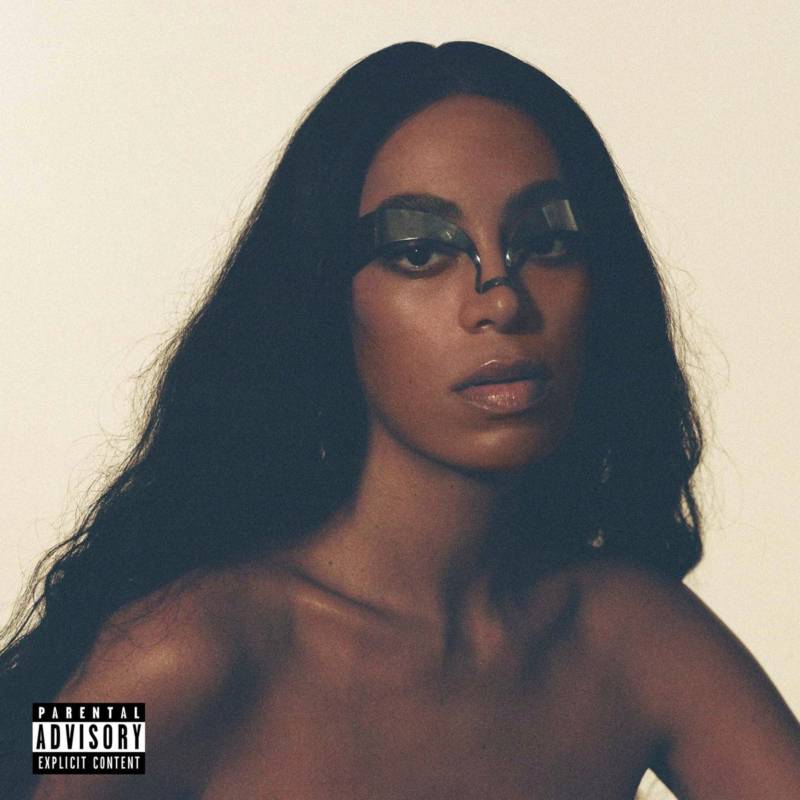
“I can’t be a singular expression of myself,” Solange whispers on her new album. “There’s too many parts, too many spaces, too many manifestations, too many lines, too many curves, too many troubles, too many journeys, too many mountains, too many rivers.”
With pulses of wah-wah pedal guitar almost drowning out her voice, the the 20-second snippet, “Can I Have the Mic (Interlude),” is easy to miss. But it’s the central thesis of When I Get Home (Columbia Records), a surprise record that the artist officially announced only six hours before it dropped on Friday.
Building on the dreamy jazz and soul vibe of her acclaimed 2016 album A Seat at the Table, and expanding its lyrical themes of black joy, pride and liberation, When I Get Home shows Solange exacting her vision with a bold confidence. It’s as if she’s no longer afraid of misinterpretation, because she trusts her audience to get it.
A Seat at the Table was a departure from Solange’s more produced pop sound of years past. Reinvention is always risky, but Solange clearly took care to articulate her message in the album’s manifesto-like lyrics (“Don’t Touch My Hair,” “F.U.B.U.,” “Mad”), and deliberately placed snippets of conversation with Master P about black artists taking ownership of—and building wealth from—their cultural production.
Resonating with fans and critics alike, those ideas propelled Solange into her in-the-moment, relaxed approach on When I Get Home, which sees her freer, looser and less guarded with her vocals and compositions. (Despite a roster of stellar collaborators like the Internet’s Steve Lacy, Tyler, the Creator, Standing on the Corner and Pharrell, Solange is credited as the sole lyricist, producer or composer on many of the tracks.)
Solange’s passion for and scholarship of black American culture is the connective tissue here for the disparate sounds she mixes into an oozing, honey-like drip: jazz drums, funky bass lines, fluttering keys and feather-light harmonies. On “Down with the Clique,” we hear the influence of Alice Coltrane’s celestial piano playing; “Almeda’s” rickety high-hats recall today’s radio-friendly trap pop as well as the HBCU marching bands that inspired her sister Beyoncé’s Coachella performance. Sample-wise, the album draws from Mike Jones, Devin the Dude and Scarface, a wink to Solange’s hometown of Houston. Still, Solange’s references to these artists and aesthetics are subtle, and float like buoys in the raw, immediate, neo-soul instrumentation that flows from one track into the next.
Nourished by these multitudes of black creative expression from various decades, Solange celebrates her culture, heritage and self with a palpable sense of fun. On “My Skin My Logo,” which features Gucci Mane, her unpolished rapping lapses into giggles mid-verse. “Binz” sees her riffing with improvised harmonies. Her chorus of “ay!”s on “Sound of Rain” turn the pensive, piano-forward track into a twerkable beat, even while its lyrics underscore an enduring thread in Solange’s work: healing through purpose, intention and ritual, and using the groove like an energetic limpia: “And the sound of rain helps me let go of the pain.”
Solange is a pop star and a performance artist who’s been embraced by the upper echelons of the art world, and she’s fully come into her power by owning her multiplicities and refusing to explain herself to one group or the other. It would be an oversimplification to say that she “elevates” elements of more accessible black popular culture by featuring Playboi Carti on When I Get Home, or turning the former social networking site BlackPlanet.com into an art project. There is no “high” and “low” for Solange. For her, creative expression is sacred.

